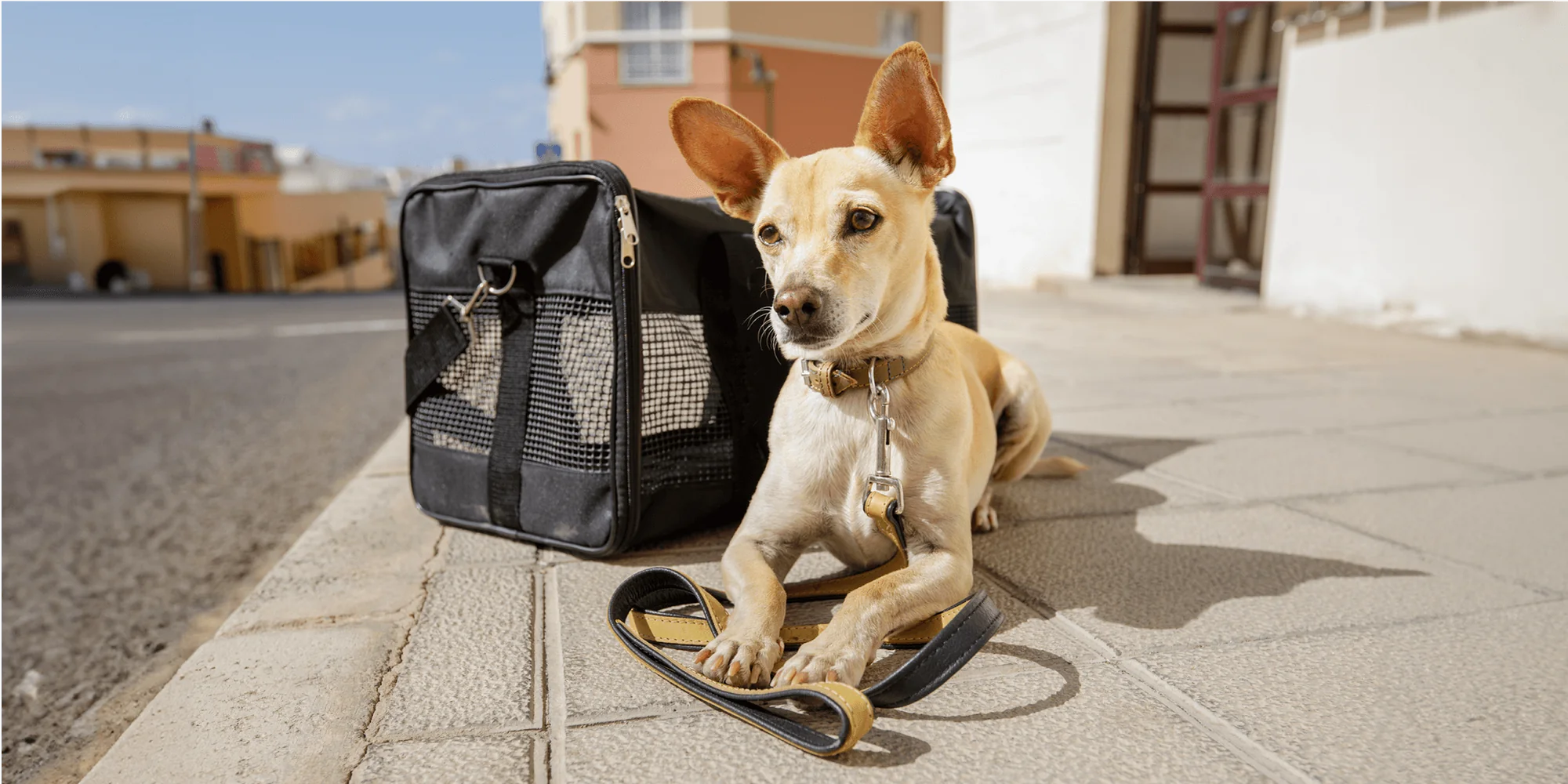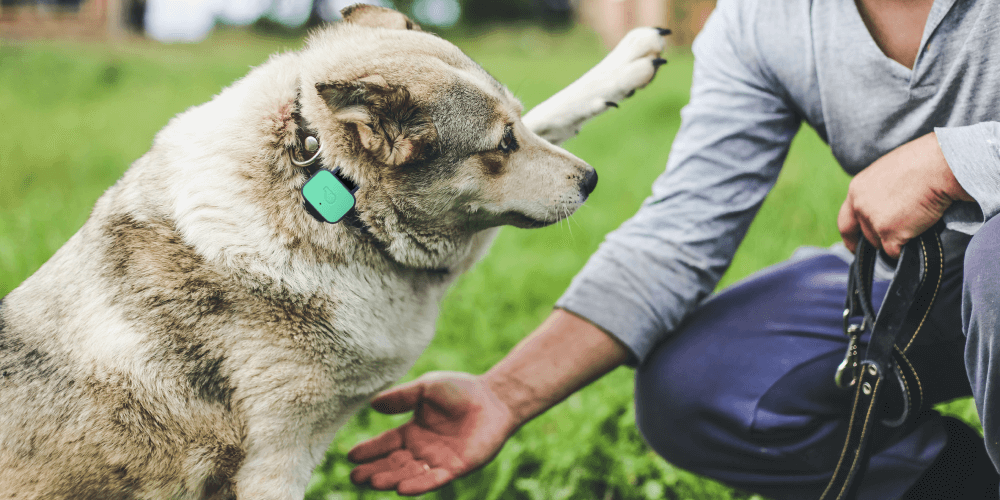Tips for a safe road trip with your dog

Does this sound familiar?
I was so excited the first time I took a road trip with my dog, Eddie. He was 5 months old at the time, and we were driving two hours away from home so that he could meet my parents. I imagined blissfully cruising down the highway with my copilot gleefully staring out the window. But Eddie had other plans.
About 20 minutes into the trip, he puked all over my car’s center console, getting regurgitated gunk in hard-to-reach places. He also whined, drooled, and just generally looked freaked out the entire time. I tried rolling down the windows, rolling up the windows, singing to him, being completely quiet, and attempting to soothe him with gentle pats on the back while trying to get us to our destination ASAP. Nothing worked. My husband and I later learned that road trips were definitely not Eddie’s thing, and that they required careful planning, along with some medication from my vet, to help ease his anxiety.
At the time, I had no clue that any sort of planning was necessary to ensure my pup was a happy copilot. I just assumed we could all hop into the car, drive, and everything would be easy-peasy. But, while that tactic may work for some dog families, it definitely doesn’t work for mine. Apparently, I’m not alone in that.
Dr. Angela Hughes, DVM, PhD, Senior Manager of Global Scientific Advocacy Relations at Mars Petcare, says a little advance planning can go a long way in making your journey a smooth one.
Planning a road trip with your dog?
Here are some important things to consider:
Check that your pet is travel-ready.
Dr. Hughes recommends checking in with your vet to make sure you're up to date on dog vaccinations, proper parasite control (including heartworm, intestinal worm, and tick medications), and any medications they’re taking. And, right now, it’s also a good idea to be mindful of any quarantine requirements you might face when you travel out of state, including how that might impact your pet.
Do a trial run before a long trek.
After all, you don’t want to end up on the freeway in a fully-packed car when you discover that your dog gets carsick. “It is always good to do a practice trip around town,” Dr. Hughes says. In fact, a few of these shorter trial trips might be helpful for getting your dog more comfortable with car rides in general.
Plan for plenty of rest stops.
How often you’ll need to take potty breaks depends on a dog’s personal preferences—and yours, of course. But Dr. Hughes recommends planning to stop every two hours for everyone to stretch their legs. “Note that this may need to be more frequent if your dog is very young or older or has a need to get out more frequently,” she says.
Make sure you won’t need to leave your pet unattended in the car.
“A dog should never be left alone in a hot car—or even a warm car as it can become hot very quickly,” Dr. Hughes says. If this is going to be tough, it’s worth reconsidering your route so that you can stop at a pet-friendly place, or traveling with another person who can keep your dog company while you run inside to grab something to eat or hit the restroom.
Properly secure your pup.
Just like you use a seatbelt in the car, dogs need to be properly restrained, too—for both their safety and yours. There are a few different options to choose from, including crates or seat belt harnesses. It really comes down to what fits in your car and what your dog likes best.
Help them relax and enjoy the ride.
If your dog seems especially stressed out about the ride, there are a few things you can do to help calm them down. Dr. Hughes recommends adding a worn T-shirt or sweatshirt to your dog’s crate or near their harness to have your scent close by. You can also use pheromone collars or sprays to help keep your dog calm, she says. And, if you know your dog is prone to anxiety, Dr. Hughes recommends talking to your veterinarian about other options, including medications.
Make sure your pet’s GPS tracker is on and fully charged for the trip.
In the unlikely but stressful event that your dog gets separated from you while you’re on the road, you’ll want to have a way to find them ASAP. Whistle Go Explore 2.0 has real-time location tracking through the app. Whistle Go Explore 2.0 even has a built-in nightlight that you can turn on with the app to help you spot your pup if they wander off. Even if your dog will be lounging in the car for the next few hours, keep that collar on. You never know what might catch their eye as soon as you open the door at the first rest stop.
Get your pet microchipped and keep your information up-to-date.
In addition to a GPS tracker, microchipping can add another level of security in case your dog gets separated from you on a trip—as long as you keep it updated with your current phone number and address. Keep in mind that microchips are only useful if your dog gets picked up and taken to a nearby vet or shelter; the technology won’t allow you to track your dog in real-time if they somehow get separated from you at a rest stop. That’s why a combination of microchipping and a GPS tracker is your best bet—especially if you have one of the top bolting breeds.
Pack all your pet’s essentials.

You probably already know that your dog’s leash is important to pack, but it’s also a good idea to bring a spare in case one gets lost or broken, Dr. Hughes says. Other crucial things to have handy on your trip:
- Food and treats
- Water (ideally water from home that your dog is familiar with)
- A water and food bowl
- Poop bags
- Towels to clean or dry your dog, if needed
- Bedding
- Other toys that your dog is familiar with to make them more comfortable
Don’t forget your canine first-aid kit.

Odds are your pet will be just fine on the road, but you’ll still want to be prepared for emergencies or injuries, just in case. That’s why Dr. Hughes recommends having a canine first-aid kit handy. Banfield Pet Hospital suggests packing yours with the following supplies:
- Phone numbers for both your vet and a local emergency animal hospital near your destination
- Rolled gauze
- Elastic bandage
- Scissors
- Milk of magnesia or activated charcoal
- Digital thermometer
- Eye dropper
- Hydrogen peroxide
- Diphenhydramine (an antihistamine)
And don’t forget that if a question comes up while you’re on the road, you can always use the Chat With a Vet feature from your Whistle app.
Listen to your dog.
You probably know your pet well enough to tell if they’re absolutely hating this. If your dog just doesn’t enjoy the car no matter how well you prepare, Dr. Hughes recommends considering alternative options. That could mean leaving your dog with a trusted friend or family member, or boarding them while you’re away from home. Not all dogs are car enthusiasts, and that’s OK.
--
Korin Miller is a freelance writer specializing in general wellness and lifestyle trends, with work appearing in Prevention, Women’s Health, Yahoo, Parade, and more. She has a master’s degree from American University and lives by the beach with her family.














